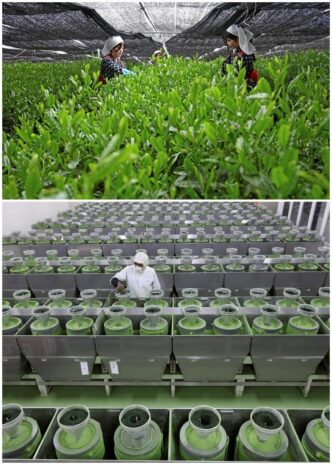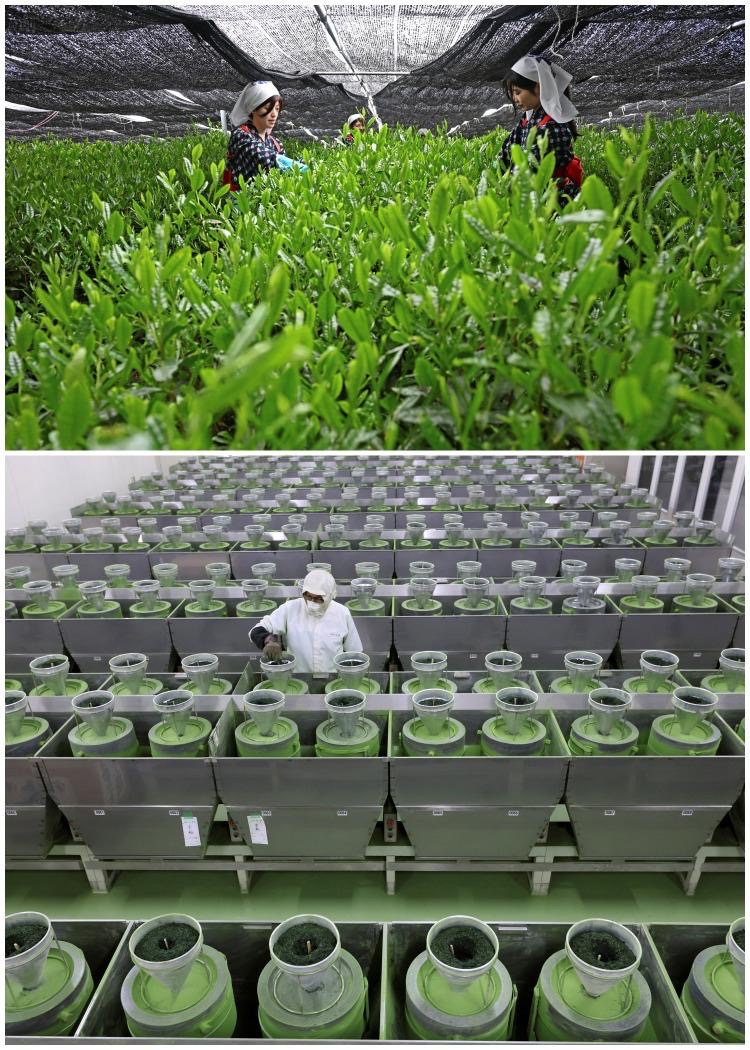China is rapidly scaling up production of matcha the finely ground, shade-grown green tea powder long associated with Japanese tea culture positioning itself as a major global supplier and transforming domestic tea regions in the process.
A Surge in Output and Infrastructure
In the mountainous southwest of China, Jiangkou County in Guizhou Province has become a poster-child for the growth of matcha production. In 2024, the county sold over 1,200 tonnes of matcha, with an output value exceeding ¥300 million (≈ US$41.7 million).
China as a whole is projected to produce over 5,000 tonnes of matcha in 2025.
The region is leveraging its climatic advantages high altitude, frequent mist, and limited direct sunlight which are conducive to producing the tea leaves that form matcha.
Production is not just about farming: there are “super-factories” with automated lines grinding and packing matcha powder at scale, and vertical integration from field through processing.
There are several drivers behind this push:
● Global demand for matcha is booming, not only for traditional tea drinking but as a flavour and ingredient in lattes, desserts, snacks and other value-added products.
● China has large areas of tea‐growing land and a workforce that can be mobilised, giving it potential to scale faster than traditional producers.
● For regions like Jiangkou, developing the matcha industry is a deliberate economic development strategy: moving from poorer agricultural base into higher value chains and export markets.
Export and Domestic Market Growth
China isn’t just producing more for domestic use its matcha is being exported to more than 40 countries and regions. Within China the matcha‐powered sector is also diversifying: aside from powders for tea, there are matcha‐infused baked goods, ice creams, beauty products, and other creative uses.
Challenges & Quality Considerations
While production is ramping up, several issues remain:
● Quality and reputation: Although Chinese matcha is improving, it still faces perception challenges compared to premium Japanese matcha. Some observers express concern that ramping up volume may come at the expense of traditional quality standards.
● Standards and controls: Producing matcha involves more stringent processes than typical green tea shading, special processing (tencha leaves), grinding to fine powder, etc. Ensuring consistent quality and meeting export standards (e.g., EU, US) is non-trivial.
● Market dynamics: With demand rising globally, supply pressure is very real. China’s ramping up helps but global shortages and rising prices remain possible.
The Bigger Picture: Tea Industry Transformation
What’s happening in China with matcha reflects a broader shift in the tea industry: moving away from commodity bulk tea toward value-added products (like matcha, specialty tea powders, tea snacks) that command higher margins, offer export potential and engage younger consumers. Regions like Guizhou are deliberately leveraging this shift to revitalise rural economies.
● For consumers: Greater supply may make matcha more accessible (and possibly lower priced) globally; but consumers will want to watch for quality, origin and processing.
● For tea producers: Traditional tea-producing regions elsewhere (e.g., Japan, Taiwan) will face increased competition. As noted by some analysts, China’s arrival as a large-scale matcha supplier could change the global balance.
● For export markets: Countries importing matcha may find more Chinese-origin matcha in supply chains; this has implications for labeling, standards, and consumer perception.
● For developing regions in China: The matcha-industry boom is an example of how agricultural product upgrading + industrial processing + export orientation can help raise incomes and transform rural economies.
The question now is how China will sustain this growth while maintaining quality, branding and global competitiveness. Key areas to watch:
● Further mechanisation and digitalisation of processing (to improve efficiency & consistency)
● Certification, traceability and meeting international food-safety/export standards
● Branding and value recognition domestic and export brands of Chinese matcha will need to differentiate on quality, provenance and style
● Market diversification: expanding not just powder for tea but into beverages, food-ingredients, snacks, health & beauty products
● Response of legacy producers (e.g., Japan) will they move upscale, emphasise premium grades, or be pressured by lower-cost competition?
China’s push to mass-produce matcha is well underway with regions like Guizhou transforming into global matcha hubs, output set to exceed 5,000 tonnes in 2025, and export markets broadening. This shift reflects both rising global demand for matcha and China’s strategy to upgrade its tea industry. While challenges remain in quality, brand recognition and market positioning, the move has the potential to reshape the matcha supply chain and global tea dynamics.
Originally written by: https://www3.nhk.or.jp/nhkworld/en/news/20251026_08/















